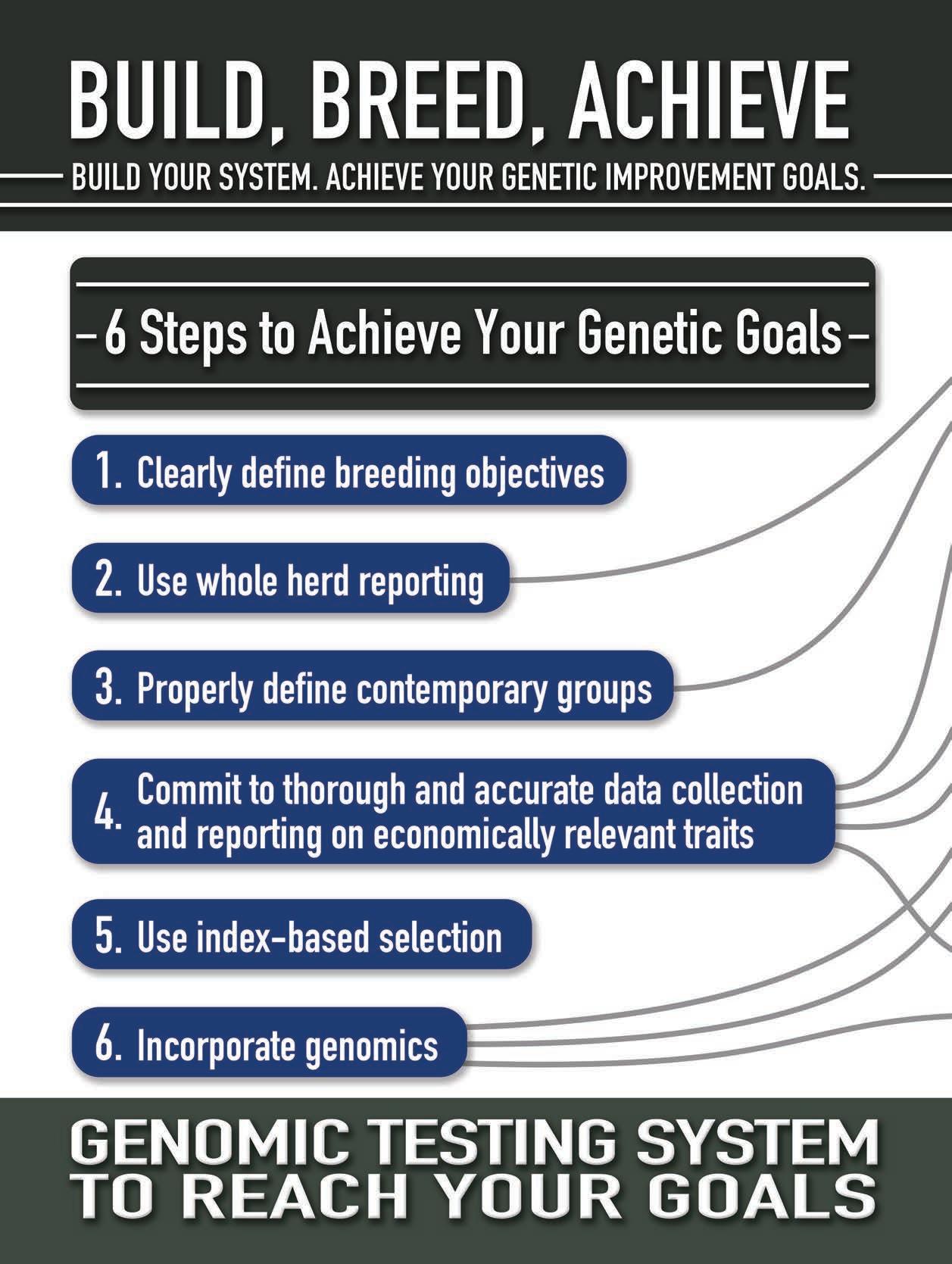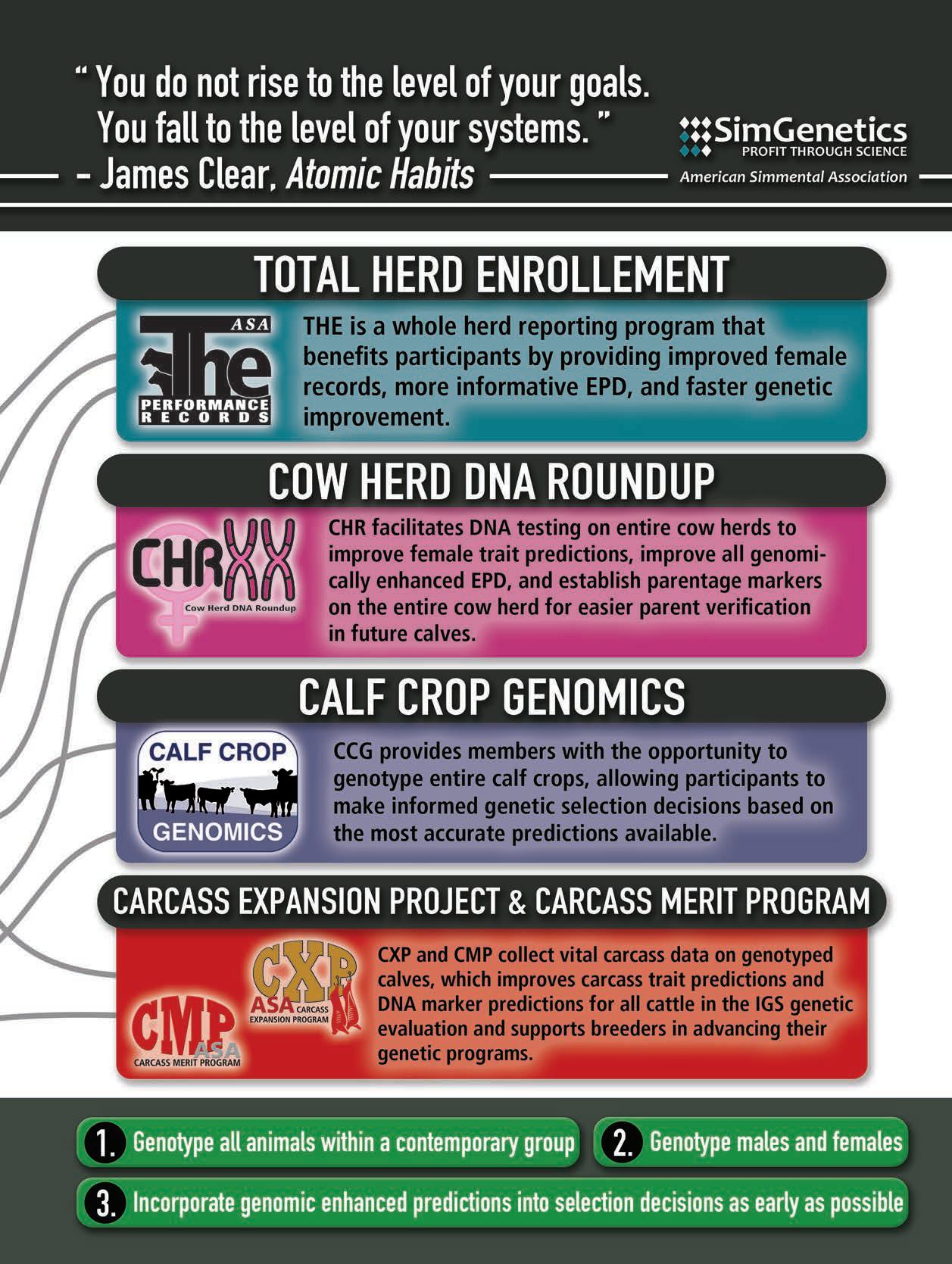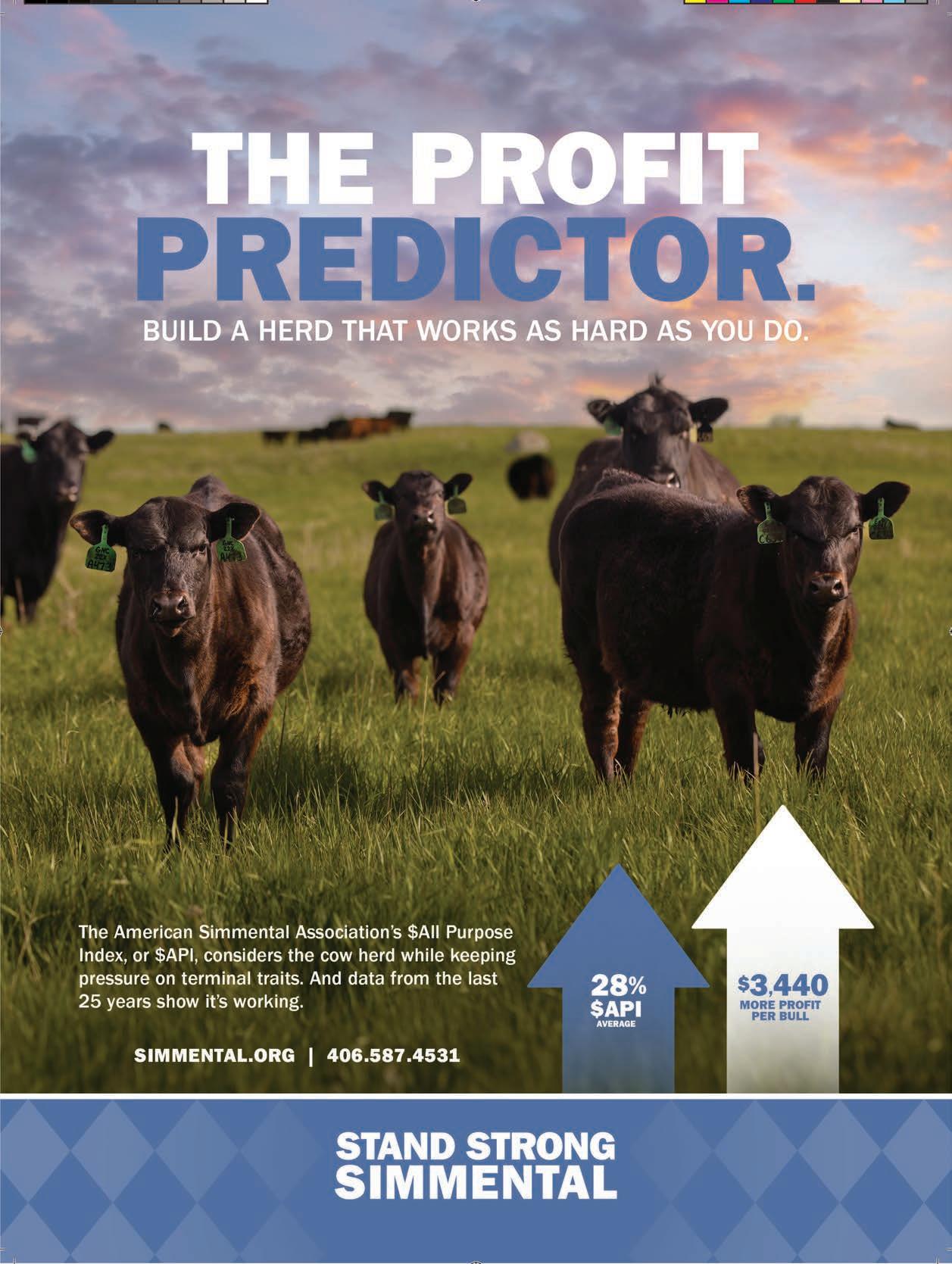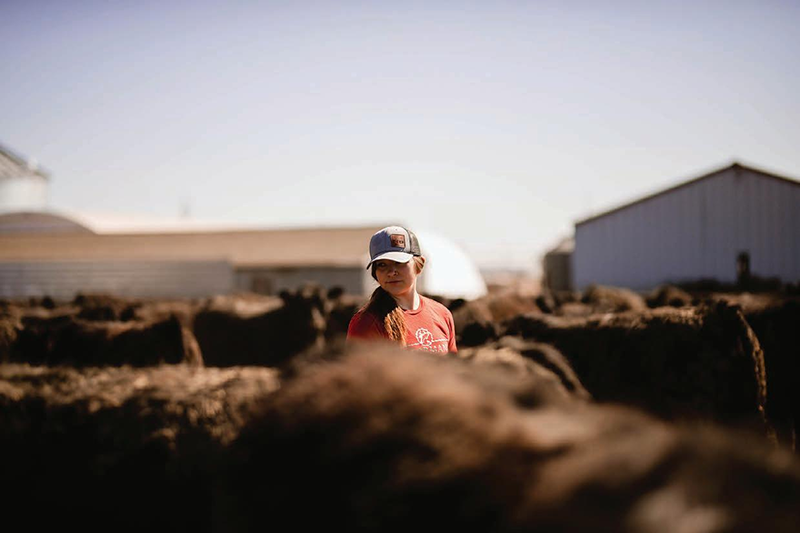Farming, Fitness, and Beef Industry Advocacy
by Lilly Platts
Andrea Flemming’s videos and content on Instagram and Facebook have gained her over 66,000 and 12,000 followers respectively, and she is frequently called on to speak about agricultural advocacy at industry events.
The fifth-generation Minnesota cow-calf producer and farmer didn’t set out to become an online influencer, but originally started her account to post workout videos and hold herself accountable. She soon found an audience online, sharing about her daily life in agriculture, and tips and inspiration for physical health. Flemming and her family run a diversified commercial cow-calf operation, utilizing SimGenetics, DNA testing, and technology.
From the Farm to the Screen
Like many young people in rural America, Andrea Flemming grew up dreaming of being a veterinarian. She pursued an animal science degree at South Dakota State University, and applied for veterinary school the spring before graduation. A letter sharing that Flemming hadn’t been accepted into vet school turned her future plans upside down. She hadn’t considered returning home to the family farm, but started spending more time there during that final spring semester. This time of uncertainty is when she also started sharing about agriculture online. “I convinced my dad to co-sign a loan to buy some bred heifers, so I would go home on the weekends during that spring semester and share on Instagram,” Flemming recalled. “I have always been obsessed with cattle, so it was an easy thing to talk about.”
Fitness had also been a big part of Flemming’s life, and she decided to start sharing about that as well. “I was really into fitness in college, but after I received the denial from vet school I lost that routine. On January 1, 2018, I drew a line in the sand, and I said that if I posted on social media then I wouldn’t give up on myself.”
Flemming started sharing workout content to keep herself accountable, and also noticed an uptick in interest in her farm-related content. The name “thatfitagvocate” was born from this combination. She kept posting, and noticed that her content was reaching people. “Instagram stories were brand new, and I was getting questions from people who had found my account through the explore page. It became very apparent that the disconnect between ag and the general public was bigger than I knew,” Flemming shared.
A job in agricultural sales filled some of her time after college, and she kept posting about her life online. “I realized I could share more of my ag story and advocate for the industry. I did not intend for it to go anywhere, and just figured that if I could share with a few people that would be good,” she said.
In September of 2019, Flemming responded to a segment on the Ellen Degeneres Show advocating for not eating meat, posting a letter addressed to the talk show host online. In the post Flemming said, “I’m challenging Ellen to talk to a real livestock producer, in fact she
should visit a few. I’m also challenging you to write a letter, post a video or response, send her an e-mail, tweet at her, whatever you have to do to show her the world we love and live for. Share this or other posts and never stop educating. Do what we gotta do to support the industry we love and live for.”
This post went viral, reaching thousands of people across the internet. Flemming has since turned her online presence into a business that perfectly complements her work on the family farm. By documenting daily life, from big moments like pulling a calf to funny stories about cows getting out, she has gained the trust and confidence of followers from around the world.
While agricultural facts are important to know, Flemming found that people are the most responsive to honest storytelling. “I didn’t want to share just stats, and I wanted to give people a behind-the-scenes look at what things look like,” she explained. “Stories are how you make connections and how you get people to step back and have an honest conversation.”
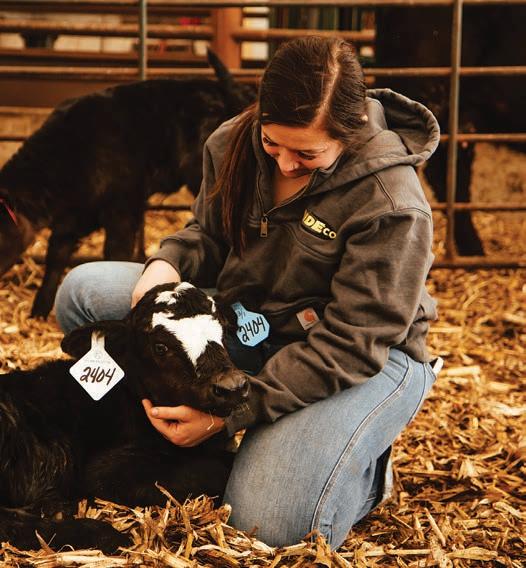
Flemming shares about the triumphs and hardships of calving through her social media channels.
Flemming has also found value in sharing about other aspects of her life. “It’s important to know your audience can be multifaceted. I have a group of followers who are producers themselves, and we have a lot of conversations. We learn and we grow from each other. There are new producers who aren’t as involved in agriculture as heavily, but they have a positive impact,” she said. “Then there is a big group to the side who followed me from one cute reel I shared, or storytelling. For anyone who wants
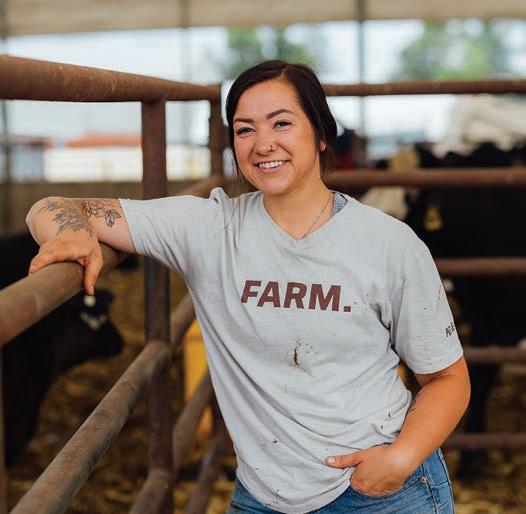
Andrea Flemming.
While agricultural facts are important to know, Flemming found that people are the most responsive to honest storytelling.
to start doing this it’s important to not zone in and put yourself in a box. A lot of the time, I bring people in from other content. Those things that are out of the box are what bring in people who are not involved in agriculture.”
The internet can be unforgiving, and agriculture is a common target. Flemming has learned that sometimes not saying anything is the most impactful strategy. “I always focus on the moveable middle,” she said. “It’s so easy to get heated about it, and there is no point in digging back at someone who comes at you in a nasty way,” she explained.
Flemming brings people into her daily life as a farmer and beef producer, and isn’t afraid to share the messy, less glamorous side of the business. Long, muddy days working cows, cold days in the calving barn, and the disappointment of losing an animal are a reality that she teaches her audience about. She also emphasizes her family’s focus on caring for their livestock. “The number one concern of consumers is animal care,” she said. “In the end, if you don’t care for your livestock they don’t produce for you. Any way we can get that message across is a win. It’s really important that each of us in the industry help people understand what we do.”
Thousands of people have been reached by Flemming’s content, but she still values real interactions the most, emphasizing that having a small number of followers online doesn’t decrease a producer’s impact. “It’s the little things that can create the most connection with producers,” she shared. “Be willing to be open, and be willing to answer questions.”
Real Life on the Farm
The stories, facts, tips, and information Flemming shares online come directly from her daily life as a farmer and beef producer. Alongside her parents, Sterling and Denise Severtson, her brother, Kris, and husband, Nathan, Flemming runs a fully diversified beef business, raising cattle from birth through finish. Their farming operation produces the feed required to feed out these animals, which are sold as finished fat cattle. The family utilizes summer grass, as well as a confinement facility, which helps with the extreme mud that can plague the area.

Andrea and Nathan Flemming.
The farming and animal care responsibilities are split up among each family member. Flemming explained, “My mom and I are more engaged in calving and animal care. My dad is more mechanically inclined, so he does a lot of feeding. We’ve leaned into our strengths, and lean on each other as things come up.”
Flemming has taken the lead on data collection and submission. Severtson Farms utilizes commercial genomic testing, as well as the Performance Beef software, and tracks data throughout the business. “I really
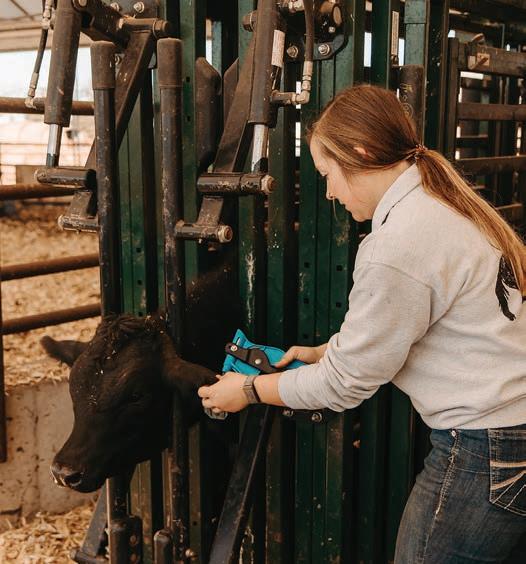
Flemming enjoys animal husbandry, as well as collecting and analyzing data.

Severtson Farms takes cattle through the entire production process, from birth through feeding.
like data,” Flemming shared. “When you track all of your data you can see where you can improve. In those harder years it’s really important to know what your cost of gain is. If you don’t have the data you have no clue.”
“When you track all of your data you can see where you can improve. In those harder years it’s really important to know what your cost of gain is. If you don’t have the data you have no clue.”
Simmental genetics have become an important tool at Severtson Farms. The family has been utilizing crossbreeding for many years, and switched to SimGenetics bulls around the time that Flemming returned home to the farm. “It’s helped on the maternal side of things, and also on the other side we’ve seen an improvement in frame, growth, and finishing,” she shared.
Flemming shares about crossbreeding, the challenges of raising commercial cattle, and the outcome of their breeding decisions on social media. Flemming is honest about the things that work, and changes they plan to make in the future. “As a commercial producer, heterosis is free money,” she said.
To follow Flemming’s journey in agriculture, and learn more about sharing your story online, search @thatfitagvocate on Instagram, visit www.facebook.com/ thatfitagvocate, or follow her blog at thatfitagvocate.com.


